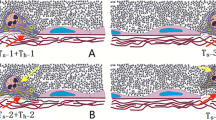Abstract
Whole blood viscosity (WBV) is considered as a reasonable proxy measure of blood flow, and it has been investigated in different cohort settings, including in patients with deep venous thrombosis, arterial thrombosis, acute stent thrombosis, and left ventricular apical thrombus formation following acute coronary syndrome. To determine the association between WBV and the presence of thrombus in the left atrium (LA) or left atrial appendage (LAA) in individuals who had transoesophageal echocardiography (TEE). The clinical data from 262 consecutive patients who had TEE at our facility were included in this retrospective cohort study. WBV was determined at both a high shear rate (HSR) and low shear rate (LSR) using hematocrit and total protein levels. In 22 cases (8.3%), the thrombus was detected. According to multivariable analyses, WBV at HSR and LSR were independently linked with thrombus detection in TEE. In a receiver operating characteristic (ROC) analysis, the area under curve (AUC) values of WBV at HSR and LSR were 0.77 and 0.76, respectively. To predict the presence of thrombus in TEE; the ideal value of WBV at HSR was > 16.6 with 81% sensitivity and 69% specificity and the ideal value of WBV at LSR was > 51.4 with 81% sensitivity and 70% specificity. This was the first study to indicate that significantly higher levels of WBV at both the HSR and LSR were linked to the presence of thrombus in the LA and LAA in cases who underwent TEE.



Similar content being viewed by others
References
Pathan F, Hecht H, Narula J, Marwick TH (2018) Roles of transesophageal echocardiography and cardiac computed tomography for evaluation of left atrial thrombus and associated pathology: a review and critical analysis. JACC Cardiovasc Imaging 11(4):616–627
Purza R, Ghosh S, Walker C, Hiebert B, Koley L, Mackenzie GS, Grocott HP (2017) Transesophageal echocardiography complications in adult cardiac surgery: a retrospective cohort study. Ann Thorac Surg 103(3):795–802
Barakat AI (2001) A model for shear stress-induced deformation of a flow sensor on the surface of vascular endothelial cells. J Theor Biol 210(2):221–236
Ozcan Cetin EH, Cetin MS, Canpolat U, Kalender E, Topaloglu S, Aras D, Aydogdu S (2015) The forgotten variable of shear stress in mitral annular calcification: whole blood viscosity. Med Princ Pract 24(5):444–450
Gunes H, Kirisci M (2018) The relationship between whole blood viscosity and deep vein thrombosis. Turkiye Klinikleri J Cardiovasc Sci 30(1):6–12
Erdoğan G, Yenerçağ M, Arslan U (2020) The relationship between blood viscosity and acute arterial occlusion. J Cardiovasc Emerg 6(1):7–12
Ekizler FA, Cay S, Tak BT, Kanat S, Kafes H, Cetin EHO, Ozeke O, Ozcan F, Topaloglu S, Aras D (2019) Usefulness of the whole blood viscosity to predict stent thrombosis in ST-elevation myocardial infarction. Biomark Med 13(15):1307–1320
Çırakoğlu ÖF, Aslan AO, Yilmaz AS, Kul S, Dursun İ (2020) Usefulness of whole blood viscosity estimated by de Simeone’s formula to predict left ventricular thrombus formation within one year following acute anterior myocardial infarction. Biorheology 57(1):37–51
de Simone G, Devereux RB, Chinali M, Best LG, Lee ET, Welty TK, Strong Heart Study Investigators (2005) Association of blood pressure with blood viscosity in American Indians: the Strong Heart Study. Hypertension 45(4):625–630
Daniel WG, Nellessen U, Schröder E, Nonnast-Daniel B, Bednarski P, Nikutta P, Lichtlen PR (1988) Left atrial spontaneous echo contrast in mitral valve disease: an indicator for an increased thromboembolic risk. J Am Coll Cardiol 11(6):1204–1211
Çekici Y, Kılıç S, Saraçoğlu E, Çetin M, Veysel Düzen İ, Yılmaz M (2019) The relationship between blood viscosity and isolated coronary artery ectasia. Acta Cardiol Sin 35(1):20–26
Silber HA, Bluemke DA, Ouyang P, Du YP, Post WS, Lima JA (2001) The relationship between vascular wall shear stress and flow-mediated dilation: endothelial function assessed by phase-contrast magnetic resonance angiography. J Am Coll Cardiol 38(7):1859–1865
Baskurt OK, Yalcin O, Meiselman HJ (2004) Hemorheology and vascular control mechanisms. Clin Hemorheol Microcirc 30(3–4):169–178
Cetin MS, Ozcan Cetin EH, Canpolat U, Aydın S, Temizhan A, Topaloglu S, Aras D, Aydogdu S (2015) An overlooked parameter in coronary slow flow phenomenon: whole blood viscosity. Biomark Med 9(12):1311–1321
Liu H, Li P, Liu J, Lu Z, Tang P, Li Z, Lin B (2019) Data for DHK effect on thrombus weight, blood coagulation, blood cell counts and whole blood viscosity in deep vein thrombosis rats. Data Brief 26:104410
Tak BT, Ekizler FA, Cay S, Kafes H, Cetin EHO, Ulvan N, Ozeke O, Ozcan F, Topaloglu S, Aras D (2020) The association between whole blood viscosity and obstructive coronary artery disease in patients with premature acute coronary syndrome. J Ankara Univ Facul Med 72(3):307–313
Casserly LF, Dember LM (2003) Thrombosis in end-stage renal disease. Semin Dial 16(3):245–256
Uziębło-Życzkowska B, Krzesiński P, Jurek A, Kapłon-Cieślicka A, Gorczyca I, Budnik M, Gielerak G, Kiliszek M, Gawałko M, Scisło P, Kochanowski J, Jelonek O, Michalska A, Starzyk K, Filipiak KJ, Wożakowska-Kapłon B, Opolski G (2020) Left ventricular ejection fraction is associated with the risk of thrombus in the left atrial appendage in patients with atrial fibrillation. Cardiovasc Ther 2020:3501749
Author information
Authors and Affiliations
Corresponding author
Ethics declarations
Conflict of interest
The authors declare that they have no conflict of interest.
Ethical approval
All procedures performed in studies involving human participants were in accordance with the ethical standards of the institutional research committee and with the 1964 Helsinki declaration and its later amendments or comparable ethical standards. The Ethics Committee approved the investigation's protocol and design (Decision Number = 21/481). This article does not contain any studies with animals performed by any of the authors.
Informed consent
Informed consent was obtained just to perform the TEE procedure.
Additional information
Publisher's Note
Springer Nature remains neutral with regard to jurisdictional claims in published maps and institutional affiliations.
Rights and permissions
About this article
Cite this article
Çınar, T., Hayıroğlu, M.İ., Selçuk, M. et al. Association of whole blood viscosity with thrombus presence in patients undergoing transoesophageal echocardiography. Int J Cardiovasc Imaging 38, 601–607 (2022). https://doi.org/10.1007/s10554-021-02445-3
Received:
Accepted:
Published:
Issue Date:
DOI: https://doi.org/10.1007/s10554-021-02445-3




